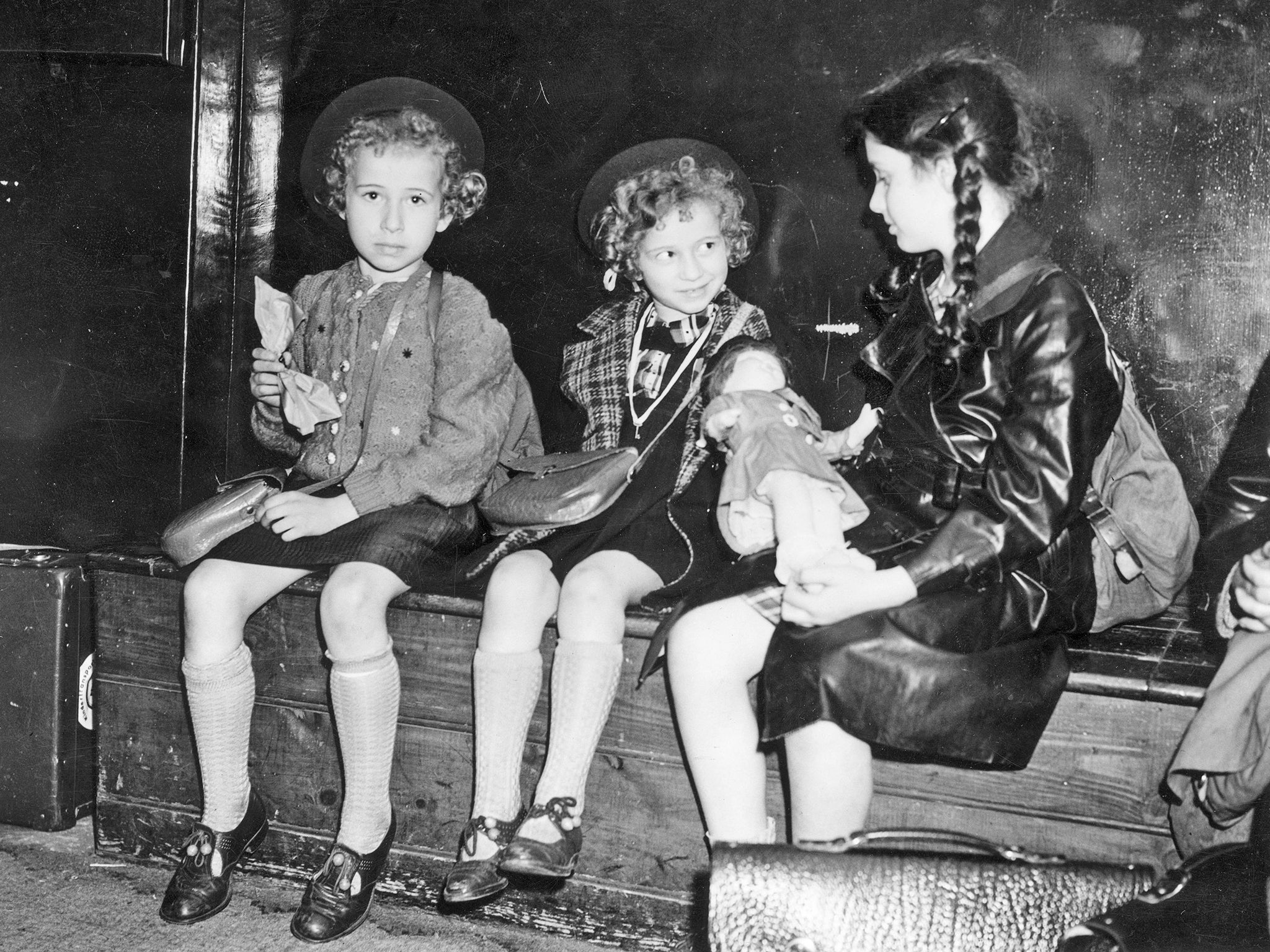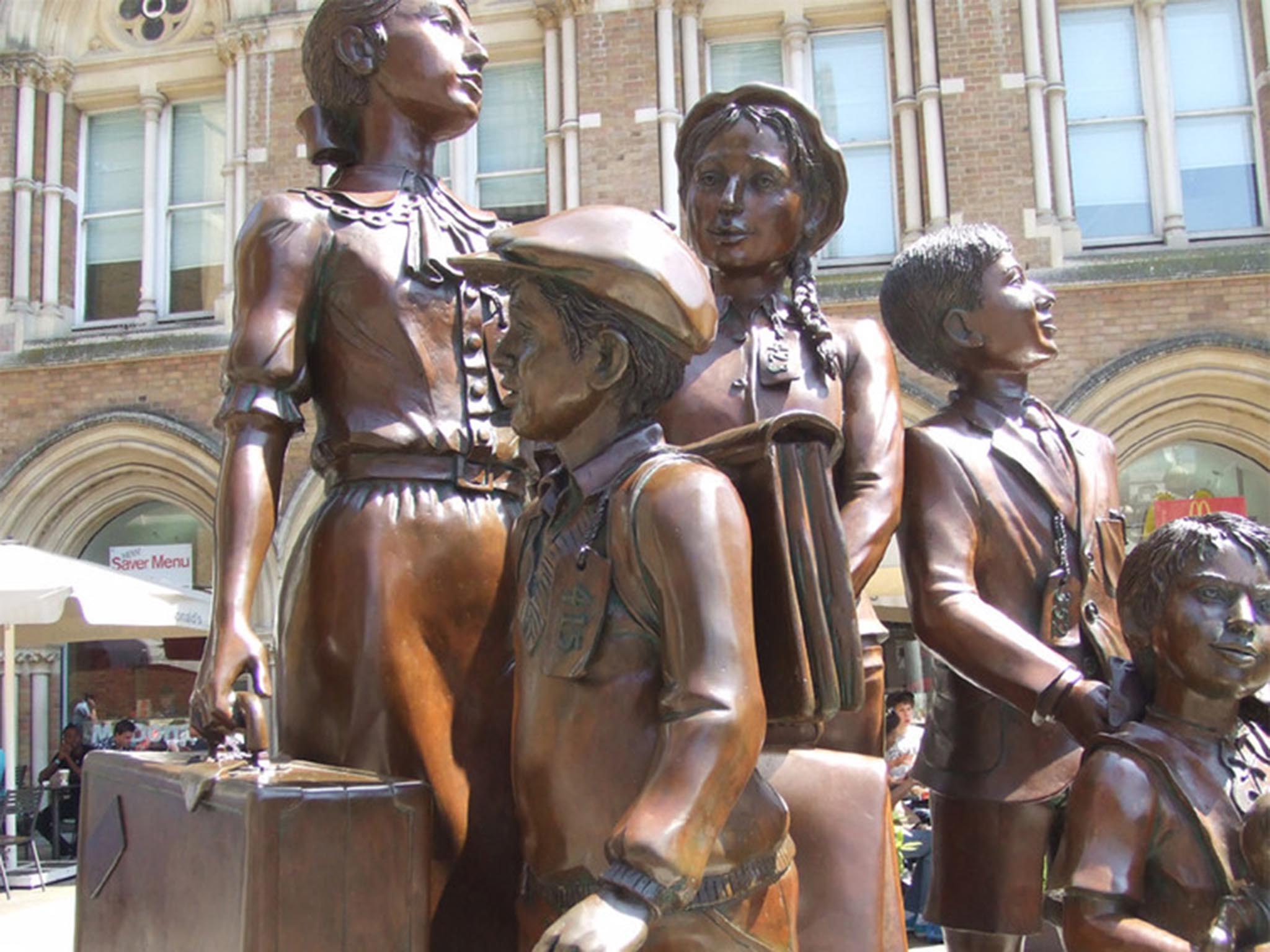Holocaust Memorial Day 2019: How the Kindertransport rescued 10,000 Jewish children from the Nazis
Horror of Kristallnacht prompted Westminster to act and save lives of thousands
The first Kindertransport train delivering German Jewish children from Nazi persecution left Berlin just over 80 years ago.
A huge humanitarian undertaking, the rescue mission would ultimately bring some 10,000 children from Germany, Austria, Czechoslovakia, Poland and Danzig to Britain with Europe on the cusp of the Second World War, saving them from certain death in the Holocaust.
The action was initiated in response to Kristallnacht (“the Night of the Broken Glass”), which saw 267 synagogues razed, 91 Jews murdered and 30,000 people rounded up to be taken to Nazi concentration camps on the night of 9 November 1938.
The atrocity made clear the seriousness of Nazi anti-Semitism to onlookers overseas, who could not fail to act in good conscience. Concerned citizens appealed to the prime minister, Sir Neville Chamberlain, to intervene and he did so.
After a debate in the House of Commons on 21 November, home secretary Sir Samuel Hoare agreed to speed up the immigration process, issuing travel documents to groups rather than individuals and waiving restrictions on infants and under-17s to allow them freedom of movement.
Both Jewish and gentile organisations, notably the Quakers, raised funds to ensure the child refugees – prioritised over their parents – would carry a £50 guarantee to finance their ultimate re-emigration, ensuring the effort would not see the British taxpayer bear the financial burden, thus seeing off a potential point of contention.
The assumption the children would be able to return home to their families on mainland Europe when the violence had blown over would ultimately prove a tragic underestimation of the Nazi threat.
The newly formed Movement for the Care of Children dispatched representatives to Germany and Austria to organise the exodus while the British government issued an appeal for foster families via the BBC Home Service on 25 November, read by Cabinet minister Viscount Samuel, a practising Jew.

Offers flooded in from 500 families as inspectors were sent out to approve prospective homes.
Arranged by a network of German volunteers, the first train departing from Friedrichstrasse Station on 1 December 1938 carried 196 children, many from an orphanage burnt down during Kristallnacht, delivering them to the port of Harwich in Essex two days later via ferries from the Dutch port of Hoek van Holland in Rotterdam.
Each carried a single suitcase, a little money and a name tag, with the Gestapo supervising their departure from Germany. On arrival in England, they were either taken directly to their foster homes or temporarily housed in summer camps.
While any child would have found the separation from their parents deeply traumatic, some fondly recalled the excitement of the journey in later life and the novelty of being given tea and cake on board.
Other trains set out from Vienna on 10 December, from Poland in February and August 1939 and from Czechoslovakia in March after the German army invaded.
The final departure from Germany took place on 1 September, the same day the Nazis entered Poland, causing Britain, France and the Allies to declare war.
The last Kindertransport mission delivered 74 children aboard the SS Bodegraven freighter from Ijmuden in the Netherlands on 14 May 1940 as the Dutch army surrendered.
Altogether some 60,000 Jewish refugees would arrive in Britain seeking asylum, with around 50,000 settling permanently and the remainder subsequently relocating to North America, Australia or the newly formed state of Israel.
While they were not universally welcomed in Britain, with opposition led by Oswald Mosley’s British Union of Fascists, the majority were moved to compassion by the plight of the Jewish people and the Kindertransport effort stands as an example of the country at its best.

Statues to commemorate the initiative stand today at Liverpool Street Station in east London, at Friedrichstrasse in Berlin and on the platform at Prague railway station, the last honouring Sir Nicholas Winton, now fondly remembered as “Britain’s Schindler”.
Sir Nicholas, then a 29-year-old stockbroker, abandoned a Christmas 1938 skiing holiday to Switzerland to help the Jewish sons and daughters of Czechoslovakia escape, setting up a makeshift office in Prague’s Wenceslas Square that would eventually find homes for 669 children safe from Nazi tyranny.

Appearing on an episode of the BBC programme That’s Life! in February 1988 to discuss his achievement, Sir Nicholas was moved to tears when host Esther Rantzen revealed the entire studio audience was comprised of adults he had saved from the Holocaust as part of the Kindertransport, in one of the most moving moments in British broadcasting history.
Sir Nicholas died in 2015 at the age of 106.
Join our commenting forum
Join thought-provoking conversations, follow other Independent readers and see their replies
Comments